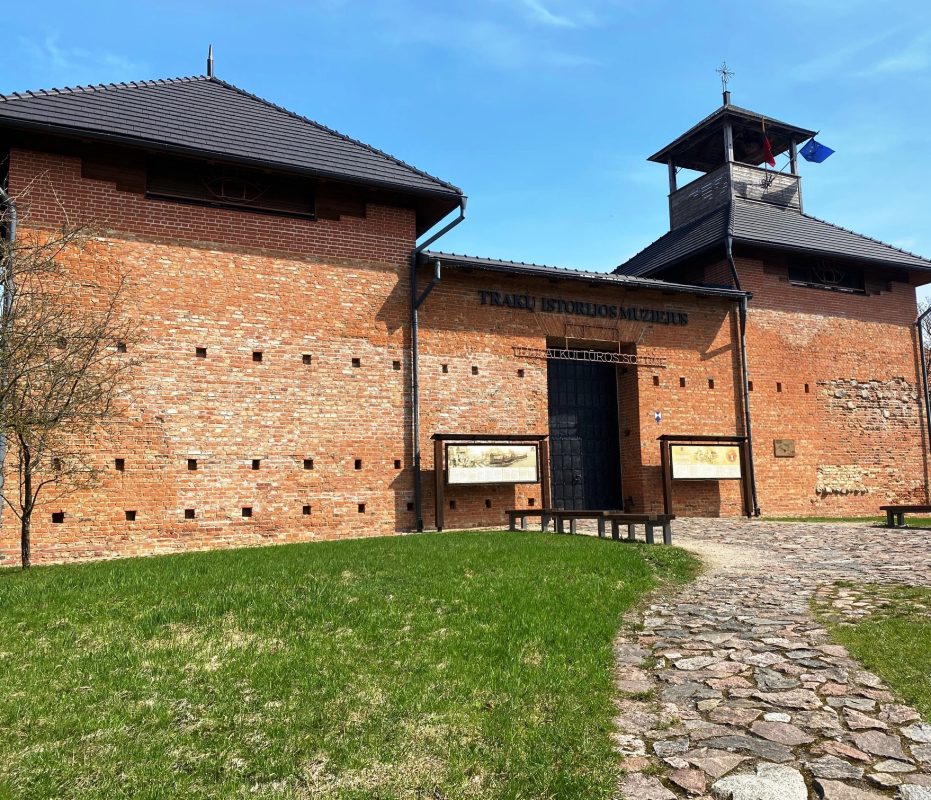The Trakai Peninsula Castle Ruins and Other Structures Complex

457

2

0
5 out of 5
(1 reviews)
The picturesque Trakai region, dotted with lakes, has been renowned for its three castles since ancient times. The first, the Old Trakai Castle, built by Grand Duke Gediminas and the birthplace of Vytautas the Great, stands about 4 km south of the Old Town of Trakai. The Island Castle of New Trakai, a masterpiece of 15th-century defensive architecture of the Grand Duchy of Lithuania, along with the Peninsula Castle, attested to the economic and military power of the state at that time.
Info
-

Mounds
-
Trakai
-
The picturesque Trakai region, dotted with lakes, has been renowned for its three castles since ancient times. The first, the Old Trakai Castle, built by Grand Duke Gediminas and the birthplace of Vytautas the Great, stands about 4 km south of the Old Town of Trakai. The Island Castle of New Trakai, a masterpiece of 15th-century defensive architecture of the Grand Duchy of Lithuania, along with the Peninsula Castle, attested to the economic and military power of the state at that time.
It is notable that the Gothic Island Castle is the only castle in Central and Eastern Europe situated among lakes. On the other hand, the Peninsula Castle, larger in scale than the Island Castle, was one of the largest enclosure-type castles in Lithuania in the 15th century. Back then, it was not only larger but also more important than the Island Castle.
Over time, the purpose of the Trakai Peninsula Castle changed. This once strategically significant defensive castle became the residence of the Grand Dukes of Lithuania and their sons. Later, it was used as a prison for high-ranking state enemies. In the late 17th century, it housed a Dominican monastery, and during the Tsarist era, it served as a police station and court. During World War II, the Gestapo operated here, and in the post-war years, it was used as a KGB prison.
Today, the Peninsula Castle, part of the Trakai Historical Museum, is restored and open to visitors. The sacred art exhibition, opened in 2005, invites you to view over 200 unique exhibits related to church life. Visitors will learn about items such as monstrances, chasubles, and albarellos.
Aukų Kalnas (Hill of Sacrifices) is the highest point on the peninsula, one of a thousand mounds in Lithuania. From this 17-meter-high hill covered with deciduous trees, you can enjoy a magnificent
view of the lakes surrounding the peninsula and the red Gothic Island Castle. According to legend, the name of the hill originates from pagan sacrificial rites that were held there. In the mid-19th century, during excavations, a perforated spoon was found. Count Eustachy Tyszkiewicz believed it was used in pagan sacrificial rituals for scooping blood.
Every year, the Peninsula Castle hosts a medieval festival that attracts visitors with its special ancient atmosphere. Here, you can meet craftsmen, merchants, knights, art ensembles, and sometimes even witches, who introduce visitors to their activities and intricacies.
Peninsula Castle
There are few written sources about the Trakai Peninsula Castle. It is known that a castle stood here by the end of the 14th century. Also called the Great Castle, it was part of the defensive complex of Trakai and Vilnius. Surrounded by the lakes Galvė and Luka (Bernardinai), this castle, reinforced with brick defensive structures, was once larger and more important than the better-known and visitor-favored Island Castle.
In the 15th century, the significance of the Great Castle began to wane. The castle lands were distributed among the nobility, and the castle itself was used to imprison high-ranking state enemies and captives. It is said that later, townspeople started dismantling the castle walls, collecting bricks and stones for building their homes.
The Peninsula Castle is one of the largest enclosure-type castles in Lithuania. The inner courtyard of such castles is surrounded by defensive walls with shooting openings, towers, and gates. This type of castle was often built in watery or naturally hard-to-reach places. Water bodies, steep slopes, deep moats, or high embankments posed serious obstacles to enemy soldiers attempting to invade the castle.
Found a mistake?
Report

 Entertainment
Entertainment
 Food establishments
Food establishments





























 54.646481, 24.937561
54.646481, 24.937561
 Get directions
Get directions









